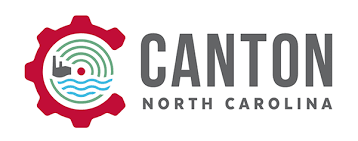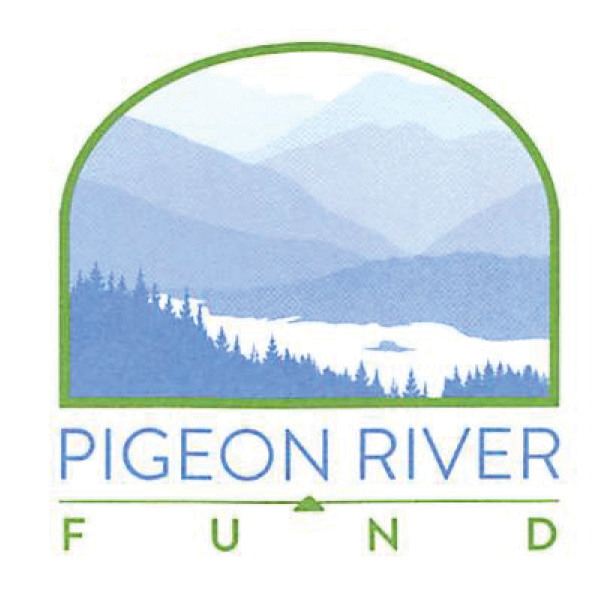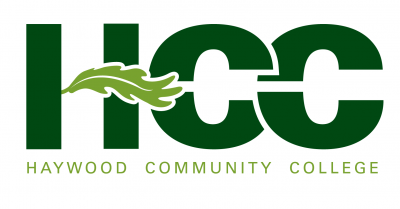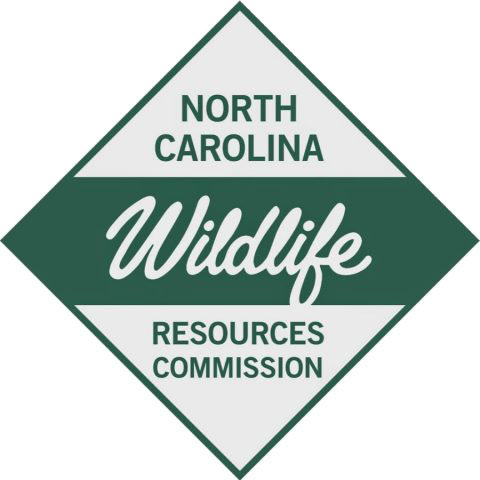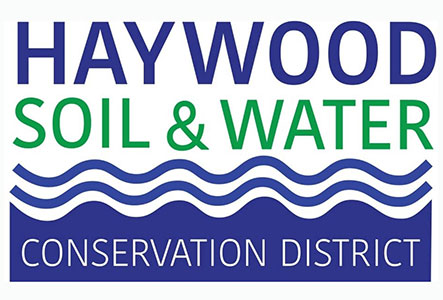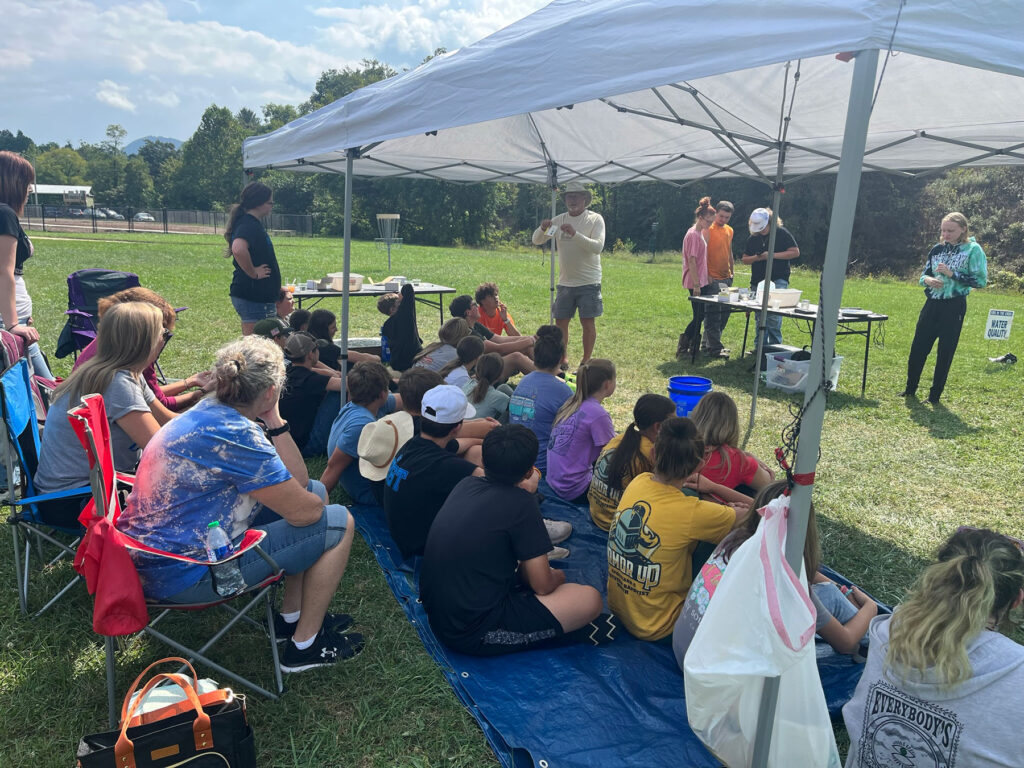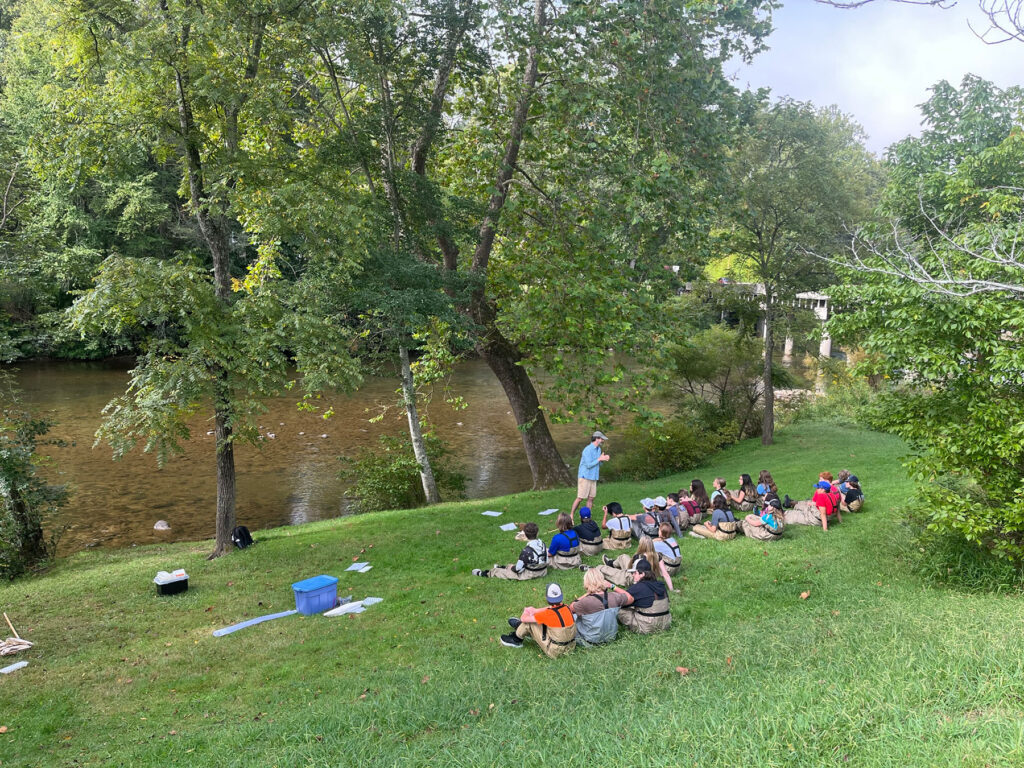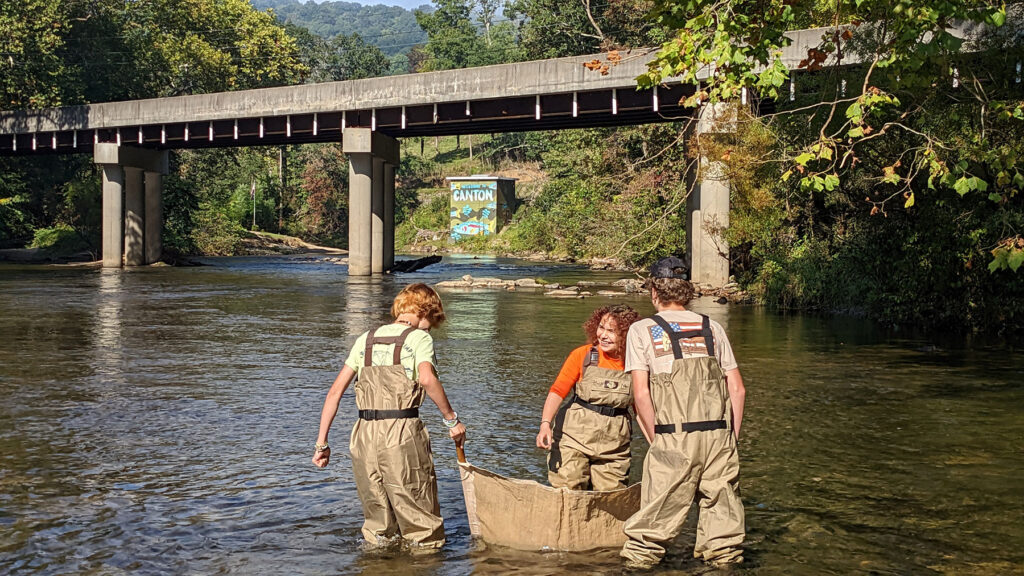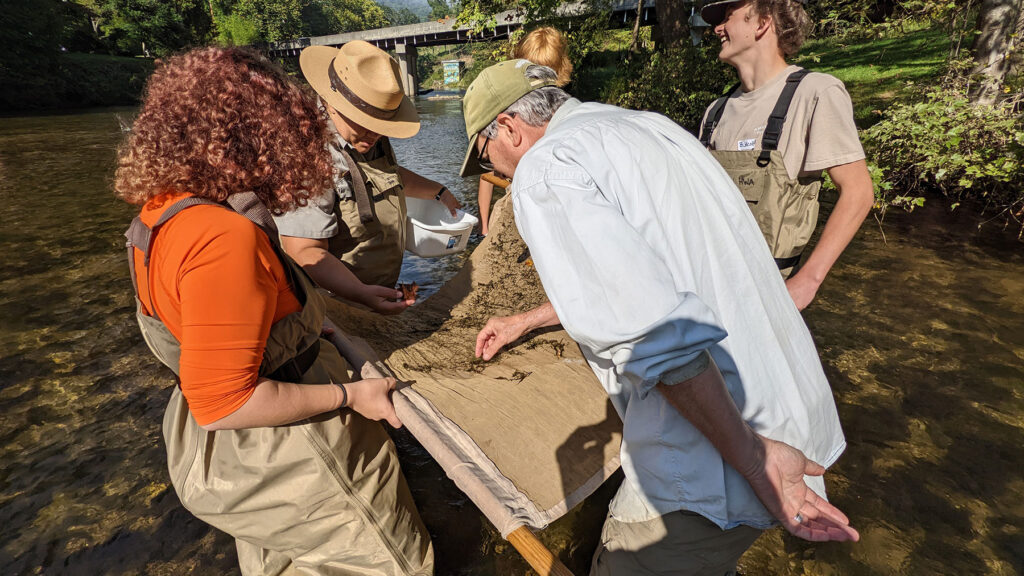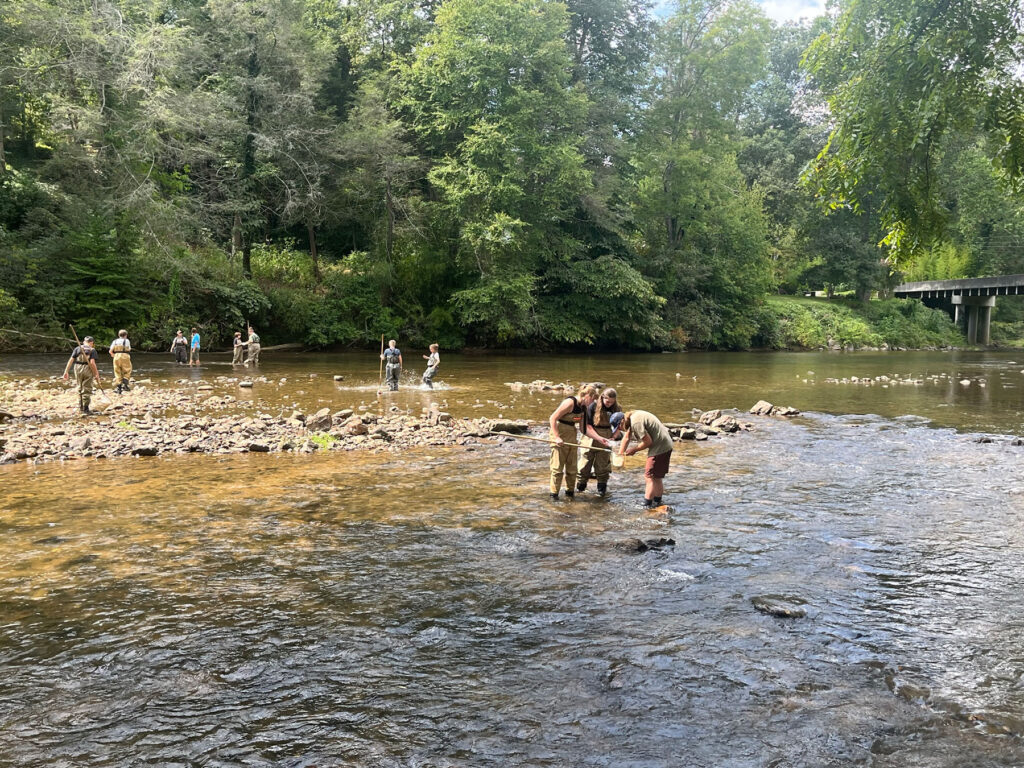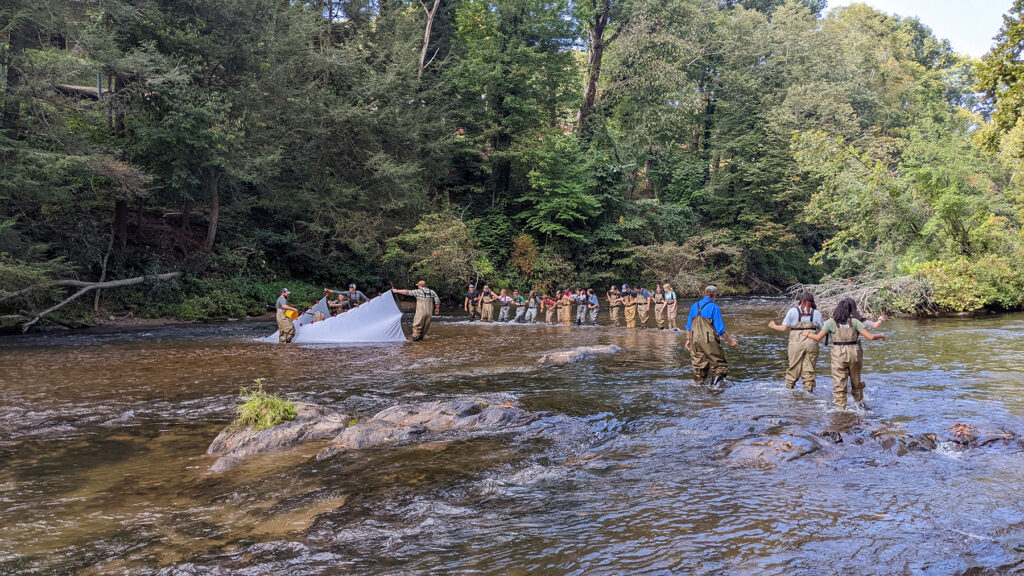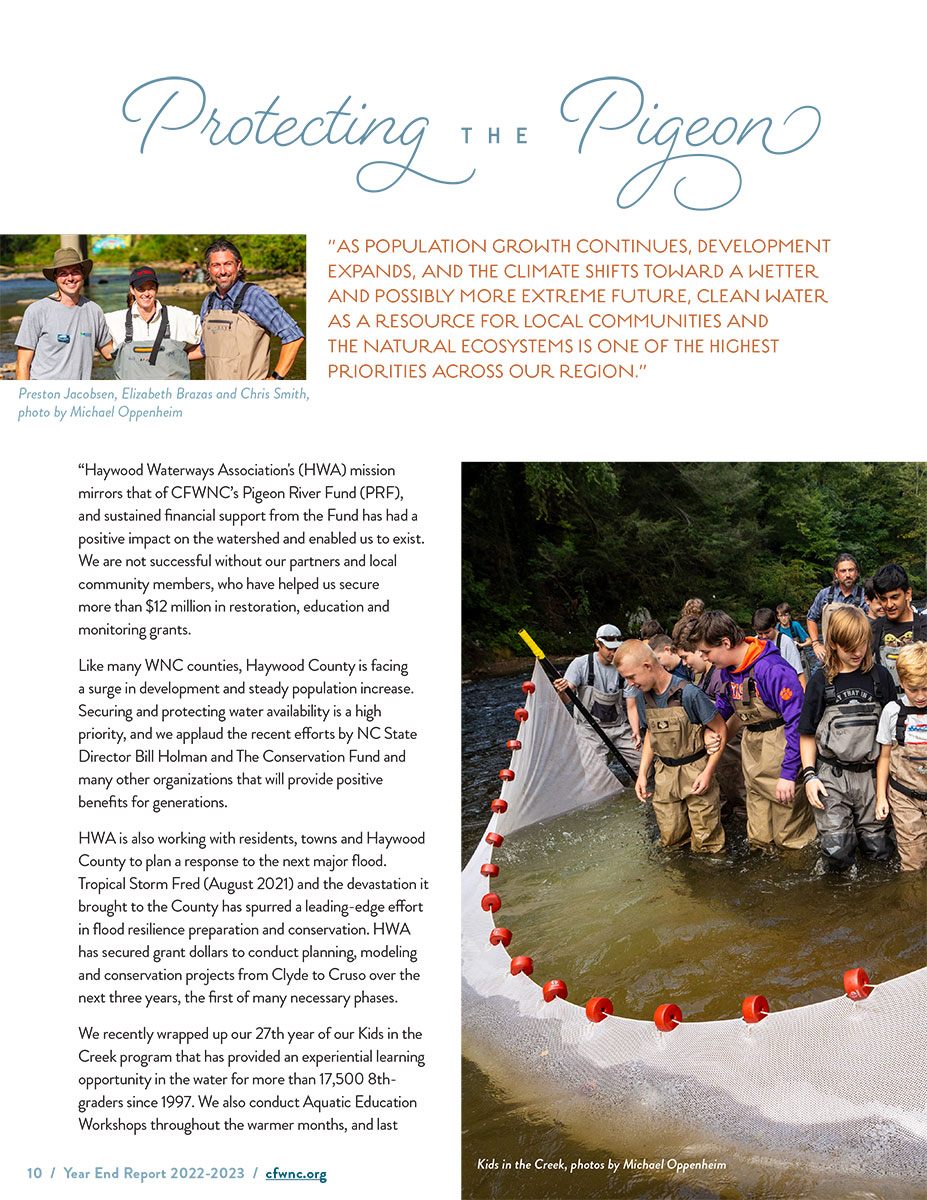Since 1996, we and our partners have provided an immersive learning experience to over 17,500 of our county 8th graders, bringing them into the water and creating a local connection to our waterways. This experiential learning program is an effective method to teach water quality education and inspires future generations to become stewards of our local waterways.
Kids In The Creek
Background
Students have the opportunity to learn what it’s like to be a state biologist in and out of the classroom. They gain an understanding of the following four categories; watershed education, water quality, fish, and benthics (macroinvertebrates).
Before they venture out into the field, they are made aware of what they are going to be learning and how to properly put on waders. They will also participate in a pre-event survey in which they may or may not know the answers to water quality related questions. They will take this survey again after the event. This will show them the knowledge gained from the field experience and also inform us on how effective our experiential learning methods are through time; the program began in 1997.
When out in the field at the Canton Rec Park by the Pigeon River, the four categories listed above are made into stations that they rotate through throughout the day. In watershed education, they have a visual to grasp how pollution affects everything downstream, and to comprehend what it means to be a headwater county – all pollution starts with us! In water quality, they learn the different parameters of water chemistry, and how it affects water quality, this being: pH, temperature, turbidity, dissolved oxygen, and nutrients. This is done through various interactive activities. The fish station is one of two where the students are equipped to be in the river. Trained personnel electroshock (mildly stun) the fish so they are able to identify them up close. The station leaders also prepare several fish in a tank so they are able to be observed. Lastly, the benthic station is where they unearth various macroinvertebrates and find out how they are long-term indicators of water quality. They are trained on how to properly extract them from the rocks and sediment. Luckily, we have lots of willing volunteers on hand (many former educators and environmental experts) to help us direct the kids and get them in and out of their waders. Thank you to all those who have helped us in the past, as we could not have done it without you!
After the field event, we return to the classroom to analyze their sampled macroinvertebrate data and their results in the Family Biotic Index (FBI). This final result will tell them how sensitive their organisms are to pollution in that location. Additionally, we present the survey once more, and to hear any feedback from the students concerning the event. These surveys are critical to the program’s success and for future funding.
We are proud to have hosted this event for almost 30 years, and we are looking forward to the next 30!
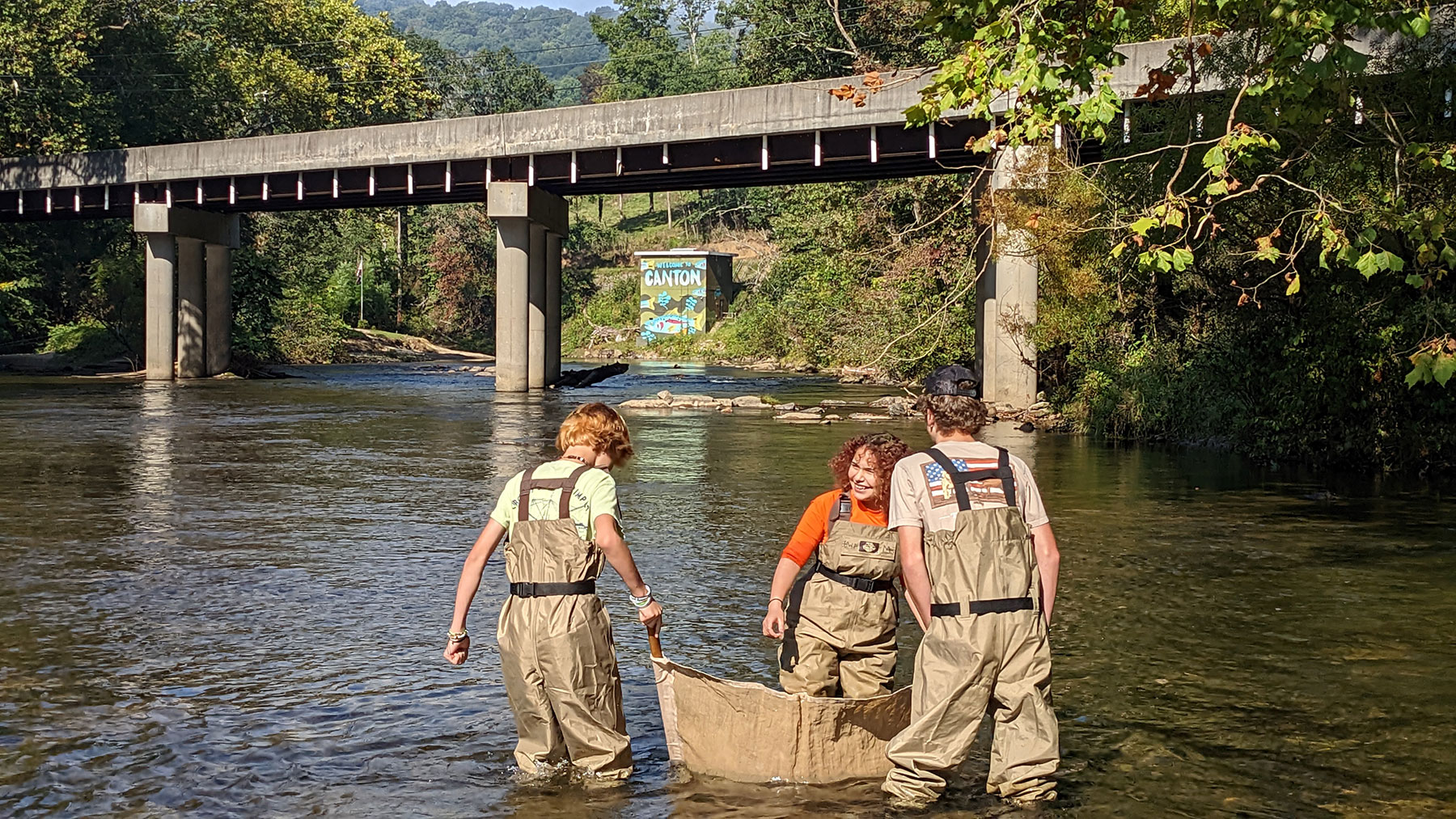
Results
Fun fact, the first students to experience Kids in the Creek in 1997, now have children of their own who are going through the same program! Consistent results from the post event survey since 2012 have shown:
- 89% said it helped them better understand what they learned in class about aquatic ecosystems;
- 86% said it helped change their minds about taking care of our natural resources and;
- 80% said it inspired them to change their behaviors towards waterways.
From 2022, two new questions were added, and out of 357 responses:
- 37% reported that the experience motivated them to think about science as a career;
- 38% reported that they thought of themselves as a scientist during the event.
Partners
